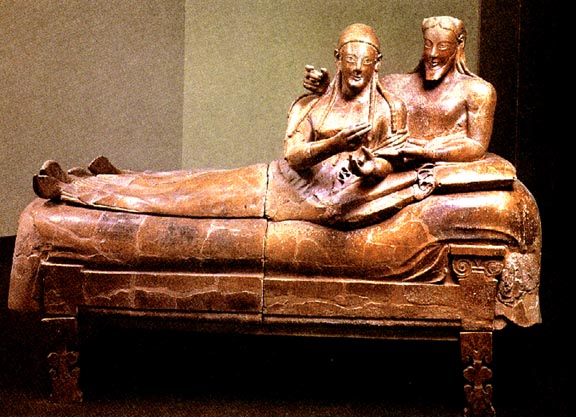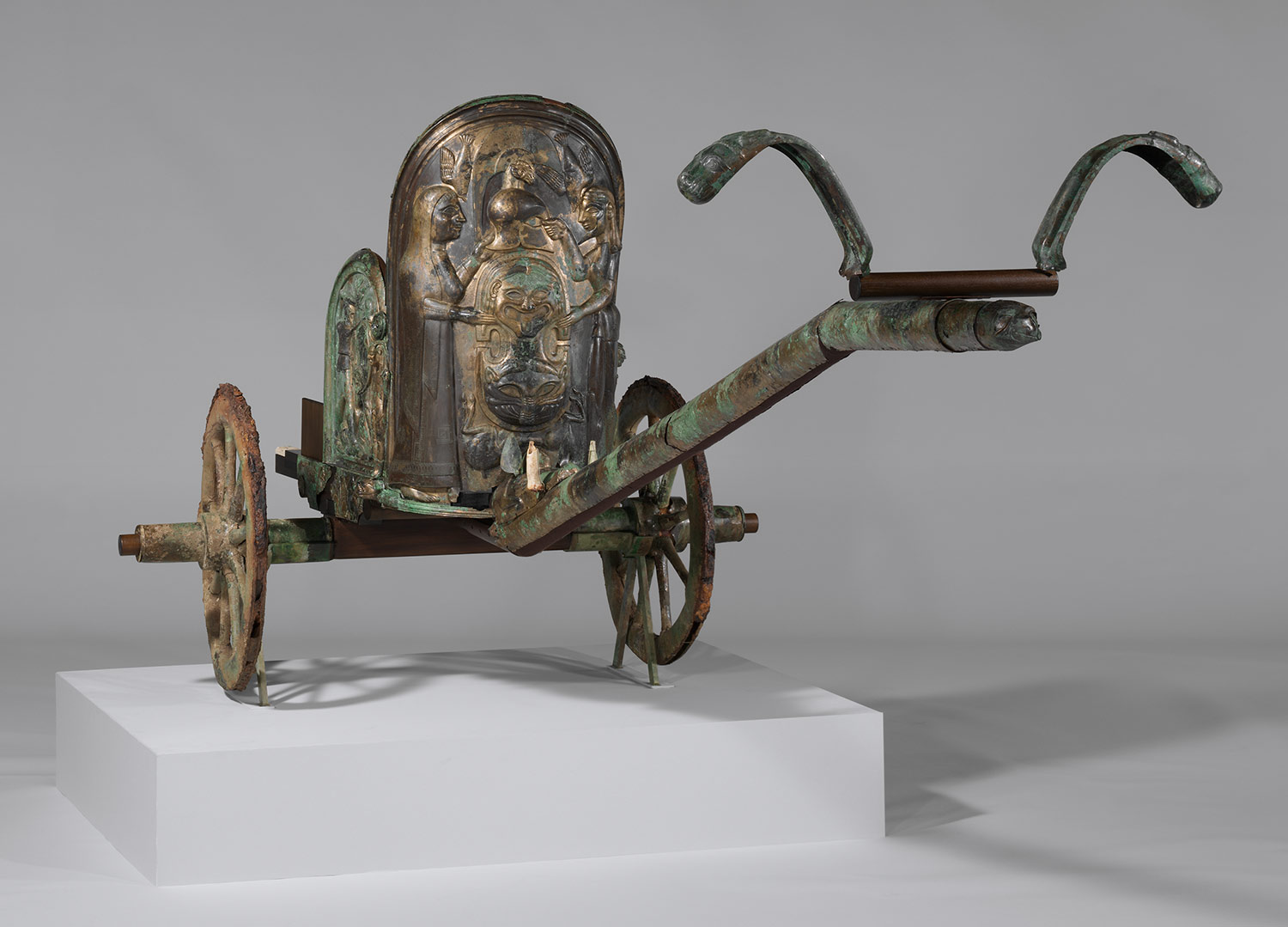Etruscans
Not much is known about the peoples now called the Etruscans. But from what we do know we see a civilization that dominated northern Italy for more than 500 years. They created beautiful artwork in the form of bronzework and frescoes. They also built large and powerful cities such as Veii and Curtun. Using large hellenistic armies they managed to control not only Northern Italy, but early Rome and Corsica as well.
The origins of these peoples are not well known, and the exact account of their origin is lost in prehistory. It is assumed however that they were either indigenous, possibly originiating in Villanovan culture or as the product of an invasion from the near east.
Expansion was focused in the north and in Campania. The aristocratic nature of Etruscan society led to larger cities that swallowed up smaller towns in their expansion. The Etruscans quickly dominated these areas and became quite wealthy from the mining of copper and iron in northern Italy. The mining they did and wealth accumulated greatly increased their influence all across Italy, and even to norther Africa in Carthage.
The Etruscans were noted for their beautiful bronzework in chariots and sculptures, such as this well-known statue of a man with his wife and the Monteleone chariot:
Their interests soon collided with those of the Greeks in Magna Graecia. Later, in a union with Carthage the combined Etrusco-Carthagnian army defeated the Greek forces at the Battle of Alalia and conquered Corsica which fell into Etruscan hands.
After the victory, Carthage expanded its influence at the expense of both Greeks and Etruscans. The Etruscans moved north after losing their southern provinces and went into decline. Soon after the Carthaginian were defeated by a Syracusian coalition that also beat the Etruscans at the Battle of Cumae. Etruscan influence declined and it began to lose cities to the Romans and Samnites. It lasted until 500BCE, when it was assimilated by Rome.









 Reply With Quote
Reply With Quote
Bookmarks